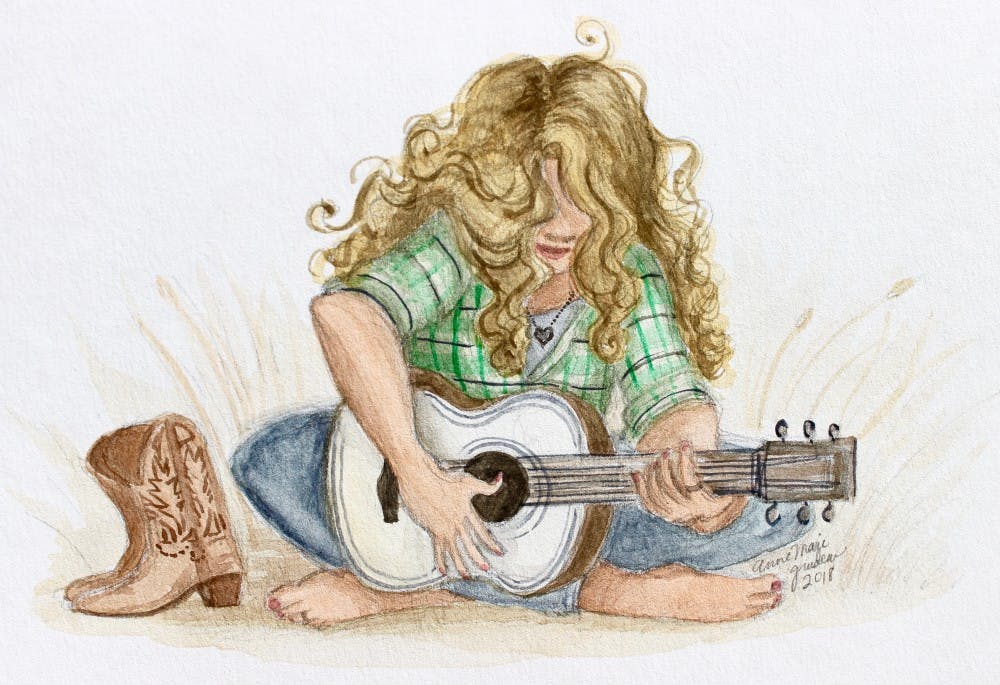I don’t really care for country music. That’s not to say every country artist is terrible, though—far from it. There are definitely some standouts for me in the genre: Carrie Underwood, old Taylor, and, if you’re driving on a hot day with the windows down, perhaps even Florida Georgia Line.
But what is so unappealing to me about country is that, ideologically, the genre doesn’t really hang together. It’s obvious that groups like The Clash, The Sex Pistols, and Guns N' Roses are all rock 'n' roll groups. The moment you hear Jay–Z or Drake come on the radio, you know you’re listening to hip–hop. When you think of artists like Katy Perry, Miley Cyrus, or Justin Timberlake, you might think, “Top 40.”
Country music, on the other hand, is a little more amorphous. When you boil it down to its sonic elements, it often doesn't sound that different from rock 'n' roll, alternative, or even some pop. Historically, country music was born out of the folk and blues traditions, carrying over folk’s strong narrative aspect and mixing it with the rhythmic 1–4–5 chord progression of most blues songs. With the birth of rock 'n’ roll, though, country emulated this new rough sound and gave rise to the “honky tonk” country that would eventually get smoothed out in the years to come.
Country music, therefore, was never sonically original—as a genre, it just borrowed from other pre–existing musical movements. But most country music undeniably shares a list of common traits: the vocals are often colored with a twang, it’s frequently patriotic, and it typically has a strong and easy–to–follow narrative. For me, though, the defining characteristic of country music is that it’s thoroughly Southern.
However, I’m not sure the quality of “Southern–ness” is enough to make it its own genre. No other musical genre has regional ties that are as strong. What’s more, country music is strictly a national genre; no other part of the world has anything remotely similar to country music.
Plus, when you put this quality of “Southern–ness” to the test, it doesn’t really stack up. Country music seems to be more a sum of its parts rather than a cohesive whole. For instance, consider a quintessential country band, Florida Georgia Line. Their hit single, “Cruise,” checks off all the boxes of what country music should be: patriotic (of course, the tune is populated with Chevy trucks), Southern (the song has a tremendous sense of place), and a strong narrative (about the leggy woman of interest). Now compare Florida Georgia Line to another quintessential country band, the Dixie Chicks. They, too, check off the same requirements, but there’s no denying that the Dixie Chicks sound fundamentally different than Florida Georgia Line. In many ways, the Dixie Chicks are more folk than anything else—their rich, tonal harmonies and acoustic fiddle solos place them more in line with the likes of Fleetwood Mac than other mainstream country artists.
The Dixie Chicks are considered country, though, because they present a Southern country narrative, despite sonically verging more on folk or even bluegrass. By the same token, artists who have a county narrative and background but lack this connection to the South are often excluded from the country label. Consider folk extraordinaire Bob Dylan. Much of his early work detailed rural country life and was colored by a cast of farmers, preachers, and con men, much like modern country is now. Yet Dylan’s northern origins (albeit strong opposition to Southern discrimination) places him firmly within the folk world.
In many ways, the lines around the edges of country music are blurred. There are many artists that walk the line between country and other genres—whether it be pop, rock, folk, or even blue grass. But what draws that line is not entirely clear. Country as a genre is a conglomeration of many different sub–genres, and exists as a catch–all more than as its own distinct genre.

